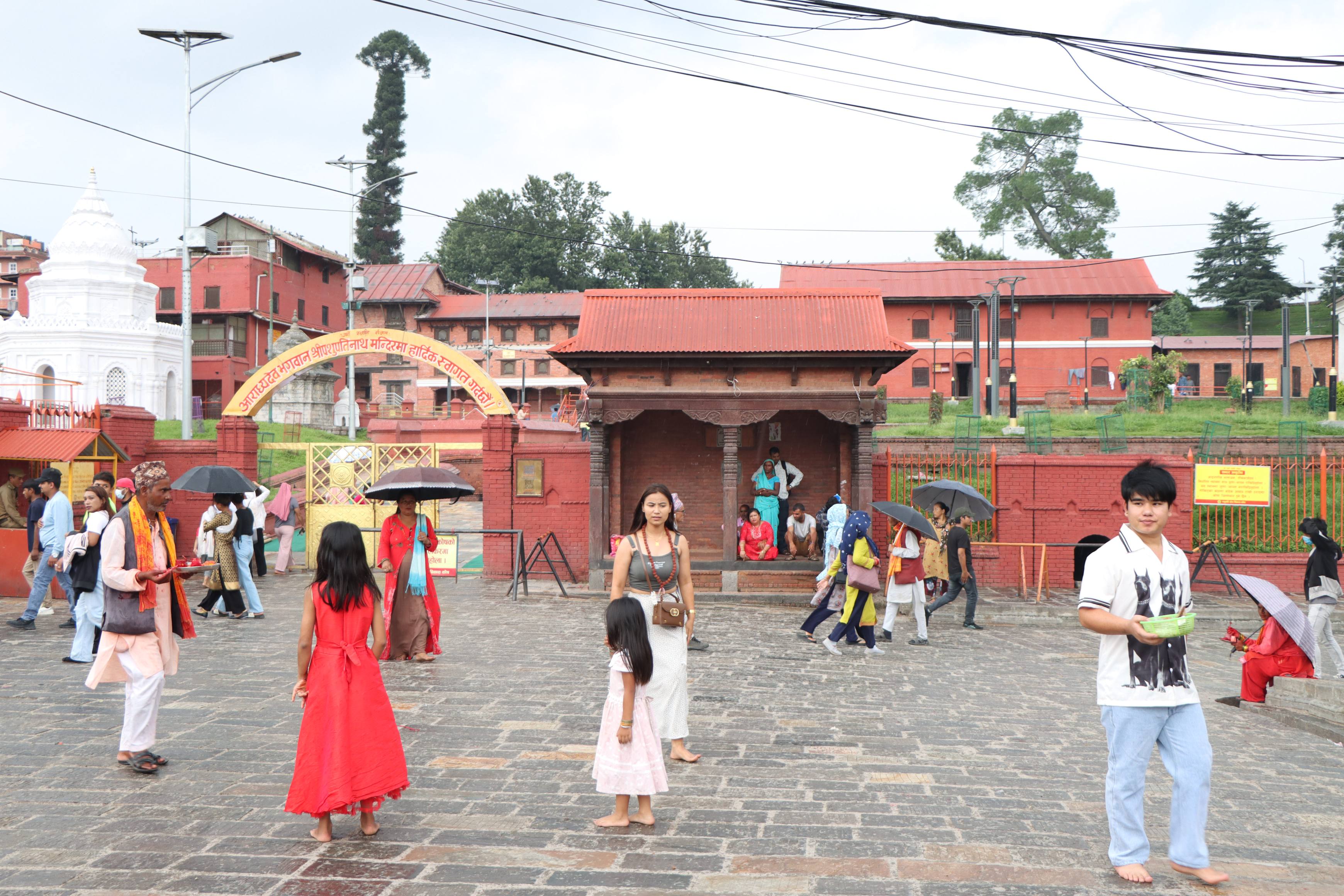Poḍe Pāṭī at Paśupati, Deupatan
Curated by Rajan Khatiwoda

This historic pāṭī (phalcā) [DANAM ID: PPK0930)], situated north of the main road leading to the Ārya-ghāṭa cremation ground, holds profound significance. Once part of the 'Kolāchi Ṭoḷa' surrounded by traditional houses, it stands as the sole survivor post-settlement removal for Paśupati area's development. Notably, this phalcā deviates from typical Newari architecture with two bays, an exception to the usual odd numbers. A 1972 aerial photo reveals its original three-bay structure, later altered during reconstruction. Renovated in 1971-72, an inscription notes arrangements by Mīnashī and Jagatsī in 1866 for regular income and social activities. Renovations by Nānīmāyā and Dhanamāyā occurred in 1997, with recent changes in 2008 by the Pashupati Area Development Trust. Locally named "Pvaḥ Phaḷcā [Poḍe Paṭī]," its association with the Poḍe caste remains uncertain. Despite claims of ancestral construction, historical records raise doubts. The phalcā, a stop during Piṃgamāī's chariot procession, once hosted devotional practices by the Poḍe community, though discontinued over time. The chariot tradition, still preserved, reflects a historical connection. For more information, visit DANAM entry here.
